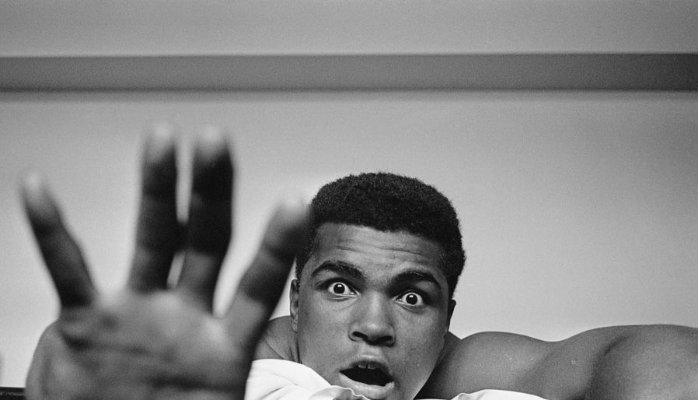
These play-by-play tips may help you nail your brand identity, and inspire others to share it.
Many get caught up with the word “brand” and believe it’s this colossal term reserved for corporate powerhouses. The reality is that every company—and in this day of social media, most individuals—can benefit from establishing what their brand equals.
My roots are in sports, so I sometimes use sports references to help me get my business points across. When it comes to Branding 101, it’s like getting hits in baseball. If you hit the ball well and cover all the bases, you can hopefully score with a winning brand and excel in the game of growing your consumers.
Know What Your Brand Means
To build your brand, you need to know what your brand equals or what you want it to equal. Write down all the characteristics that describe what you are and how you would like to be perceived. Once you compile that list, you could fine-tune it and make sure you have full command of your brand in order to reach your customers and, more importantly, your potential customers. The adjectives and characteristics that make up your brand ideally differentiate you from your competitors and provide a clear understanding of what your business is not only capable of doing, but also what it is known for, and how you successfully sell your products and services.
The adjectives and characteristics that make up your brand ideally differentiate you from your competitors and provide a clear understanding of what your business is not only capable of doing, but also what it is known for.
Many small-business owners believe their business serves a need for a particular audience. But the problem is knowing if that potential customer base is large enough to build a business. A neighbor of mine came back from the Caribbean after a wonderful week of fun and lounging on the sunbeds that were all around the resort. He’s a carpenter and thought it would be a cool idea to build and sell them to folks on the lake. He built a prototype and figured out the cost per unit and what he would price it at retail. Due to production costs and the number of potential buyers on the lake, even if he got everyone to buy, the profits were not going to be sufficient enough to operate a business. He wisely chalked it up to a cool idea and not a business. My neighbor was smart enough to realize that to build a brand, you need an audience.
In this resort bed example, the target audience and the product need weren’t great enough to build a business and a brand around the concept. A viable business may lend itself to building that solid brand and assist the business’s growth.
Make Your Employees Brand Ambassadors
Your employees should know what the brand stands for and be true to the brand in everything they do. Often the owner and management know what the brand equals, but the people actually interacting with customers may not fully grasp the brand and its intent.
Many company leaders do not know who they are or how to convey what the brand equals, and employees at these companies have brand confusion and questions. Instead of being sure when it comes to their brand interactions, they may guess how they should represent the brand. This is an area where small businesses have the potential to outshine large corporations. Your employees can have a much deeper relationship with consumers, and, because of the multiple hats they wear, should be able to absorb the brand to the fullest.
The key is keeping your employees engaged, informed and empowered. Capture the brand so they understand it and know what you want to convey. Don’t just assume they will get it. Train them with examples that are both pro and con so they are fully schooled to represent the brand properly. Once they are trained and understand the brand, encourage them to support the brand message and reward them for acting in your brand’s best interests. The systems and protocols should help reinforce the importance of representing your brand. This is less about what they are saying to customers and more about how they are acting and embodying the brand. For example, if the brand is all about precision and cleanliness, then undocked and soiled uniforms are not properly displaying the brand.
Communicate Your Brand to the Public
Communicating your brand positioning is not just about the adjectives you choose to support what the brand equals. It also involves the methods and manner in which you are communicating the brand to the general public and, more importantly, to your target consumers. This has to do with the messaging and communication of the brand to others.
To aid yourself and your employees, you might create phrases, copy and descriptions that hit the bull’s-eye when communicating with customers or clients. It may help not just to know what the brand stands for but also how to properly communicate that in order to avoid brand confusion. Create a checklist of points to touch on while engaging with customers, to stay in line with the brand and what it represents. It might include situational encounters where a customer makes a request or has a question and the employee has a guide to the appropriate answer or response.
Also consider ensuring there is a set opening and exit when communicating to punctuate the brand and its positioning so the first and last impressions are always on brand. Lead them to the right path in consumer engagement and help them support the brand.
Get Target Customers to Amplify Your Brand
Finally, when your target consumers understand the nuances of your brand and can distinguish how your brand differs from the competition, you might have hit the ultimate brand goal.
To help ensure all brand communications and associations are consistent, try having a brand filter or a systematic questionnaire. This filter might have questions that help you determine whether or not your brand is being properly communicated and represented.
For example, one question might be, “Is the vehicle or manner of communication consistent with how the brand is perceived?” If you are selling pizza dough, you may not want to promote it in a restaurant review magazine that is more targeted to people who enjoy fine dining, whereas a baking, cooking or trade publication may make more sense, depending on your brand filter.
Another example question in the brand filter: “Does the association help or hinder the brand?” Using the same example of the pizza dough, you may not want to sell your dough in a bakery that has terrible reviews. Sure, the fact that it is a bakery provides relevance, but their terrible reviews could assist in eroding your brand. Also remember, it may work best when one person or group is in charge of determining the relevance of the association, to keep the interpretation of the brand filter more consistent.
If you communicate your brand message to your target audience properly and your brand positioning is easy to understand, hopefully your employees will be great brand ambassadors, along with your most avid consumers. When your consumers are fans of your brand and identify with it, they may become vocal in spreading your brand’s message. Word of mouth marketing has always been important, but it can be even more crucial in this age of social media. Just as you reward your employee, you might give perks and special treatment to those avid customers and fans of your brand that promote your products and services. Their endorsement may be more powerful than any commercial or copy you could produce.
When I was a kid, my mother always used to say that you are the company you keep. So hiring the wrong employees and aligning with the wrong vendors and partners may erode your brand. A strong group of caretakers of your brand may lead to further reaching brand ambassadors with your consumers. When you build that consistency and integrity and it flows through your customers, you just may hit a Brand Grand Slam.
Author: Lou Imbriano
CEO, TrinityOne, Inc








